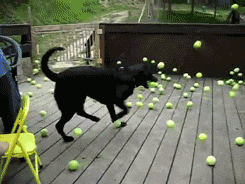part 1
http://www.youtube.com/watch?v=TardJHHShIA&list=PLmLY-95hXuovYpz_B4oW4YEqlo44GingNPart 2
http://www.youtube.com/watch?v=ikAxhIctk5s&list=PLmLY-95hXuovYpz_B4oW4YEqlo44GingNThis post will be updated more as I acquire more knowledge and experience.
The major things
Write down the name, you need to be able to research it later.
Check the back glass for flaking this reduces value the worse it is the more the price should plummit
Check the play field for wear spots around the art work
Check the plastics for damage around the plastic ramps.
Can you get inside the machine? If you can't you cannot be sure if the game is even complete and the older the game the harder it is to find parts.
Inside the machine check for patch work {wires that were added by someone trying to fix the machine}
Also look for loose parts, as in screws nuts and bolts disconnected wires, discoloration where something obviously was but isn't now.
- Tips and General moving information -
Never transport a game with loose items like coins and

inside the machine.
Sometimes the owner doesn't know there's a second key inside hanging on the coin door. This is something to keep eyes out for when you need to get behind the back glass to do work but you didn't have the key. The less drilling the better.
Inserts on the play field dry up over time and shrink causing a depression which a ball going at speed will eat up the paint around the inserts and significantly reduce the value on a complicated artwork game.
The most important thing is to not overspend on a game. If its a super rare game in nice condition then that might be worth spending a small premium for because nice condition rare game are not always very common.
Speaking about the price AGE DOES NOT GUARANTEE RARITY OR HIGH PRICE. A lot of the older pinball games are incredibly difficult for a new person to the hobby to restore. Finding parts for an older machine can be difficult not impossible but difficult. There's a lot more parts to fail on older machines to because there older and they have more ware and tare than newer machines. So don't fall into the mindset of "its expensive so it must be rare" because it might be but without looking at it and going "ok that pop bumper is missing the top of its lid, the ramp is broken in two pieces and held together with masking tape, the board doesn't look like its been cleaned since it left the factory, the metal under the lock down bar has rust on it, the pop bumper coils look like someone held a flame thrower to them, and the

look like someone took sanding paper and put holes in them"
Also just because they say "$2000" you can go "well this is wrong with it, this is wrong with it, this is very wrong with it" then offer them a price your comfortable with paying. The reason i say this is if you buy a machine and you know you over payed for it your going to end up getting mad and frustrated the longer it sits there not working while you spend hours trying to find the one part you need. Then when you find the part its likely going to be somewhat expensive so you'll have cost of machine + cost of parts and supply's + manual labor if you do the work yourself = Fixed game.
When someone says "is it worth it" its not a matter of value as if you really want it and want to make it work that's great more power too you. There more referring to the fact of do you really want to take the project on? Do you have the space, time, money, and will power to take it on?








